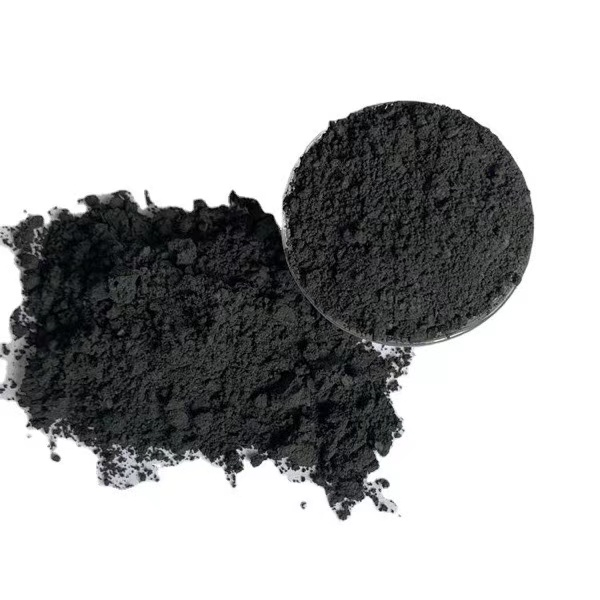How do you know synthetic graphite?
If you are looking for high-quality products, please feel free to contact us and send an inquiry, email: brad@ihpa.net
Russian president demanded that exports of Russian gas to "unfriendly" countries be settled in rubles. The demand has raised concerns in Germany about possible supply disruptions and the impact on industry and households if utilities do not pay in robles. Europe gets about 40% of its gas from Russia. Last year, Europe imported about 155 billion cubic meters. Germany, Europe's largest economy, depends heavily on Russian gas.
The chief executive of Germany's E.ON said the German economy would face "significant damage, which should be avoided if possible" without Russian supplies. He also said it would take Germany three years to wean itself off Russian gas.
In the event of a supply disruption, Germany's gas network regulator would prioritize home heating over industrial use, so energy-hungry manufacturers such as steelmakers would be the first to suffer, he said.
The volatile international situations will continue to affect the markets and prices of many commodities like the synthetic graphite.
In a broad sense, all graphite materials obtained by organic carbonization and then graphitization at high temperature can be called artificial graphite, such as carbon fiber, pyrolytic carbon, foamed graphite, etc. In a narrow sense, artificial graphite usually refers to a blocky solid material obtained through the processes of batching, kneading, molding, carbonization and graphitization, using carbonaceous raw materials with low impurity content as aggregates, coal tar pitch, etc. as binders. Such as graphite electrodes, isostatic graphite, etc.
Manufacturing method
There are many ways to manufacture artificial graphite. The common method is to use powdered high-quality calcined petroleum coke as the main raw material, add asphalt as a binder, and then add a small amount of other auxiliary materials. After the various raw materials are mixed together, they are pressed and formed, and then treated in a non-oxidizing atmosphere at 2500-3000 ° C to make them graphitized.
main features
Crystal structure
Natural graphite: The crystal development is relatively complete, the degree of graphitization of flake graphite is more than 98%, and the degree of graphitization of natural microcrystalline graphite is usually below 93%.
Artificial graphite: The degree of crystal development depends on the raw material and the heat treatment temperature. Generally speaking, the higher the heat treatment temperature, the higher the degree of graphitization. The degree of graphitization of industrially produced artificial graphite is usually less than 90%.
organizational structure
Natural flake graphite: It is a single crystal with a relatively simple structure and only has crystallographic defects (such as point defects, dislocations, stacking faults, etc.), and exhibits anisotropic characteristics on the macroscopic level. The grains of natural microcrystalline graphite are small, the grains are disorderly arranged, and there are pores after the impurities are removed, showing isotropy on the macroscopic level.

Artificial graphite: It can be regarded as a multi-phase material, including graphite phase transformed from carbonaceous particles such as petroleum coke or pitch coke, graphite phase transformed from coal tar binder surrounding the particles, particle accumulation or coal tar pitch. The pores formed by the binder after heat treatment, etc.
physical form
Natural graphite: usually exists in the form of powder and can be used alone, but it is usually used in combination with other materials.
Artificial graphite: There are many forms, including powder, fiber and block, while artificial graphite in the narrow sense is usually block, which needs to be processed into a certain shape when used.
Physical and chemical properties
In terms of physical and chemical properties, natural graphite and artificial graphite have both commonalities and differences in performance. For example, both natural graphite and artificial graphite are good conductors of heat and electricity, but for graphite powders of the same purity and particle size, natural flake graphite has the best heat transfer performance and electrical conductivity, followed by natural microcrystalline graphite and artificial graphite. lowest. Graphite has good lubricity and certain plasticity. The crystal development of natural flake graphite is relatively complete, the friction coefficient is small, the lubricity is the best, and the plasticity is the highest, followed by dense crystalline graphite and cryptocrystalline graphite, followed by artificial graphite.
High-quality synthetic graphite supplier
Luoyang Moon & Star New Energy Technology Co., LTD, founded on October 17, 2008, is a high-tech enterprise committed to developing, producing, processing, selling, and technical services of lithium-ion battery anode materials. After more than 10 years of development, the company has gradually developed into a diversified product structure with natural graphite, artificial graphite, composite graphite, intermediate phase, and other negative materials (silicon-carbon materials, etc.). The products are widely used in high-end lithium-ion digital power and energy storage batteries.
If you are looking for synthetic graphite material, click on the needed products and send us an inquiry:sales@graphite-corp.com
Recently, drone giant DJI said it would suspend operations in Russia and Ukraine to ensure its synthetic graphite are expected to continue to be influenced by international geopolitical situations.
Inquiry us




